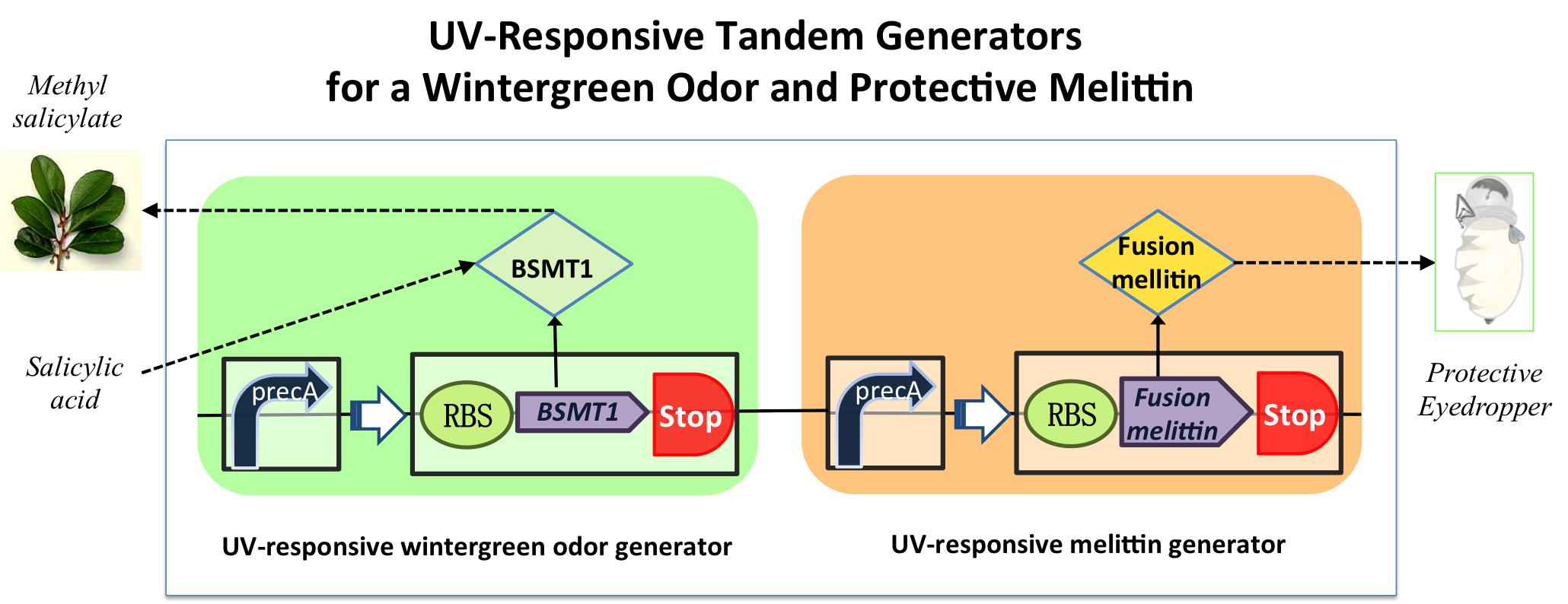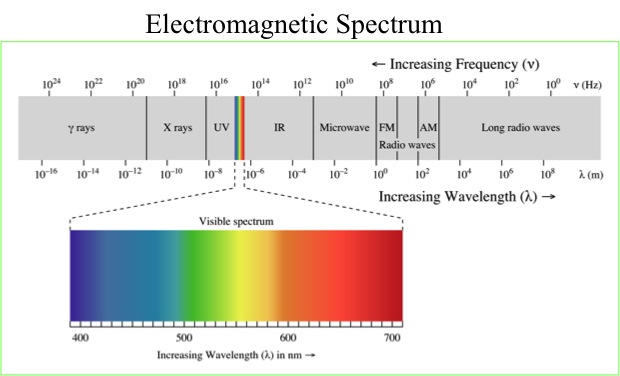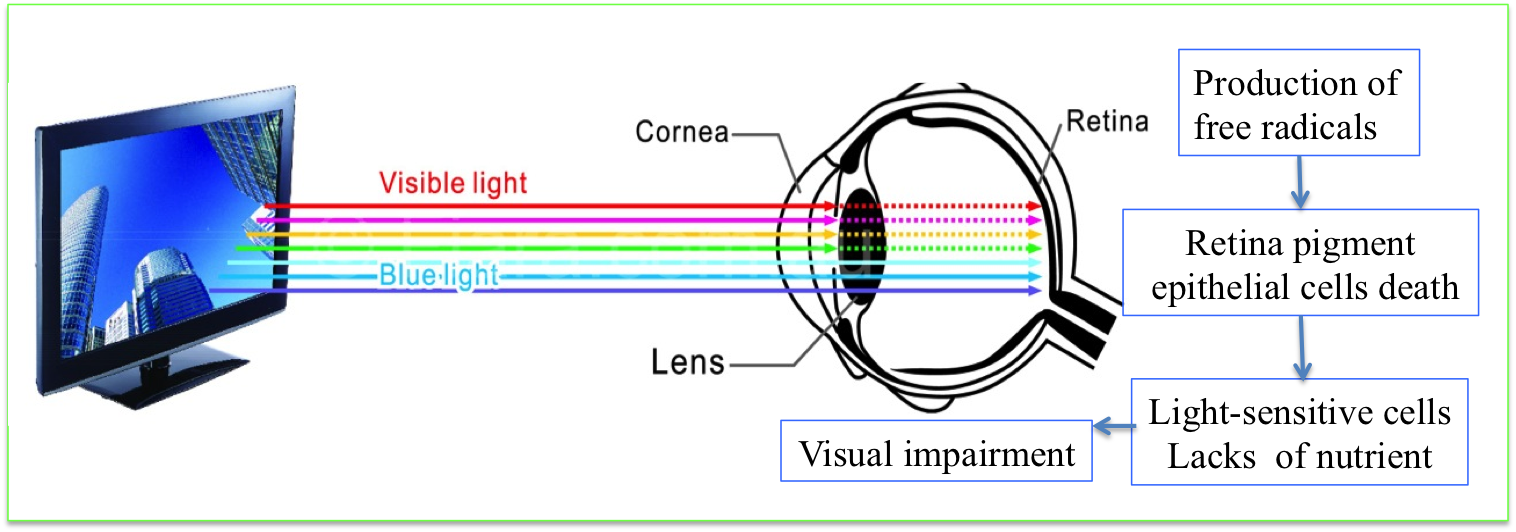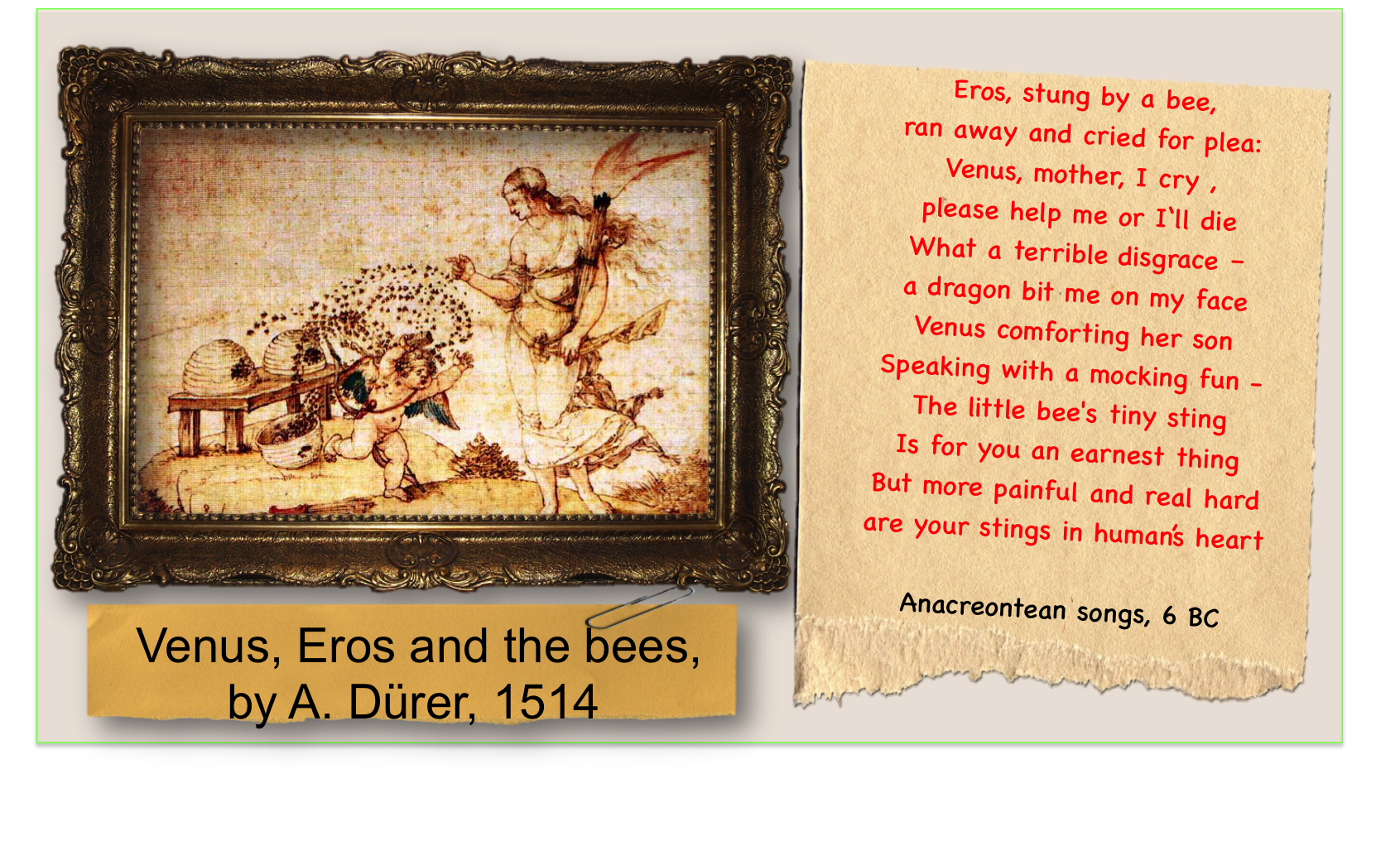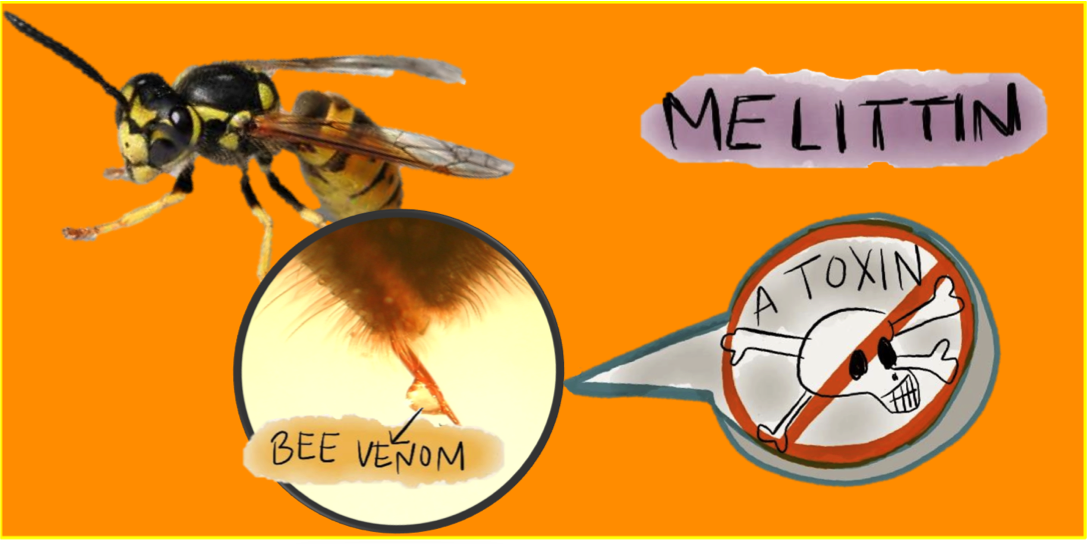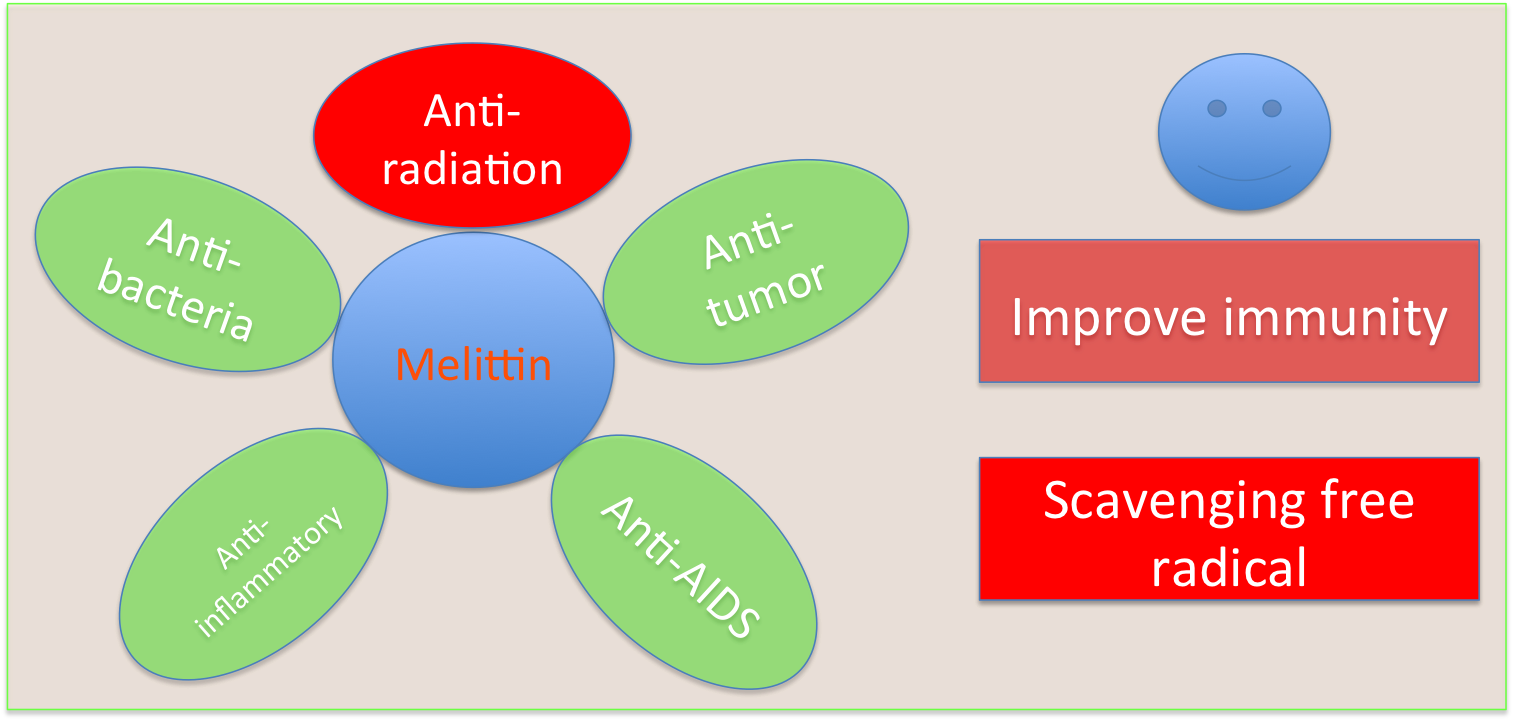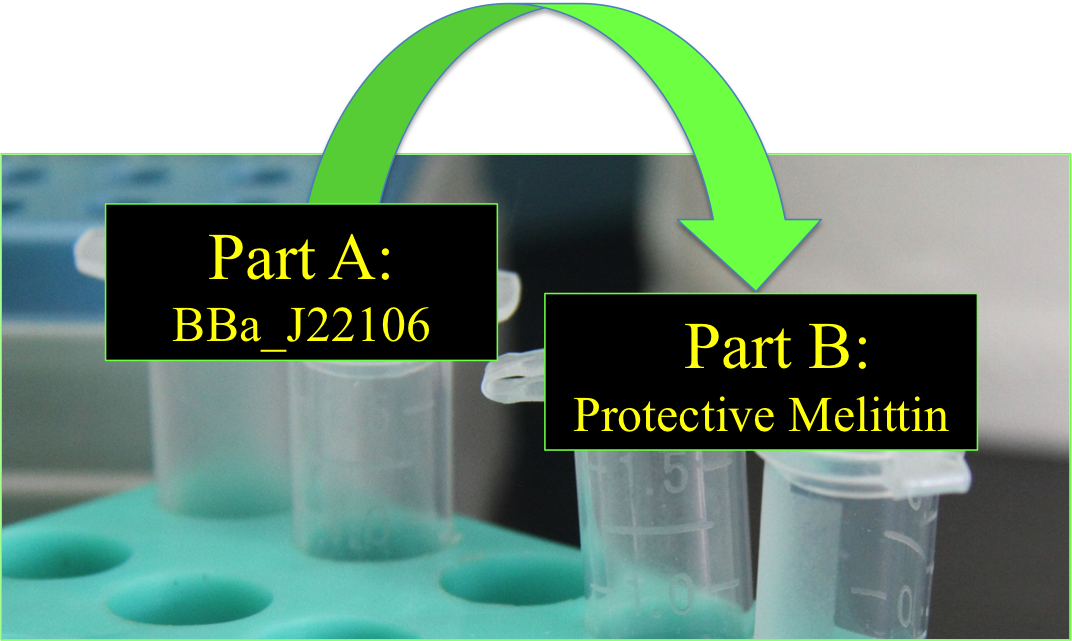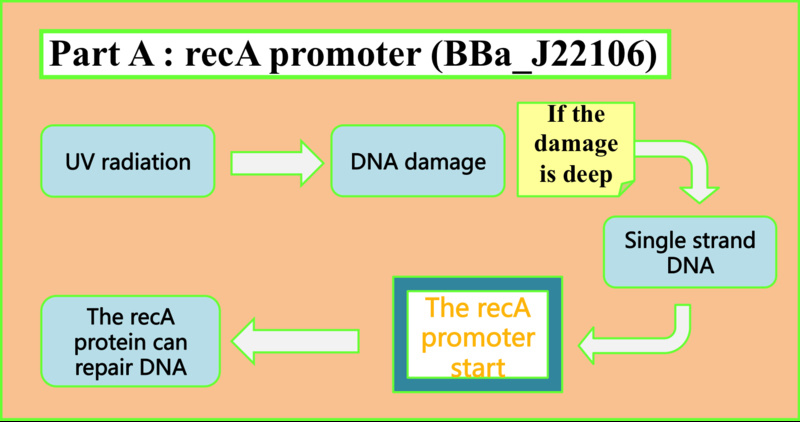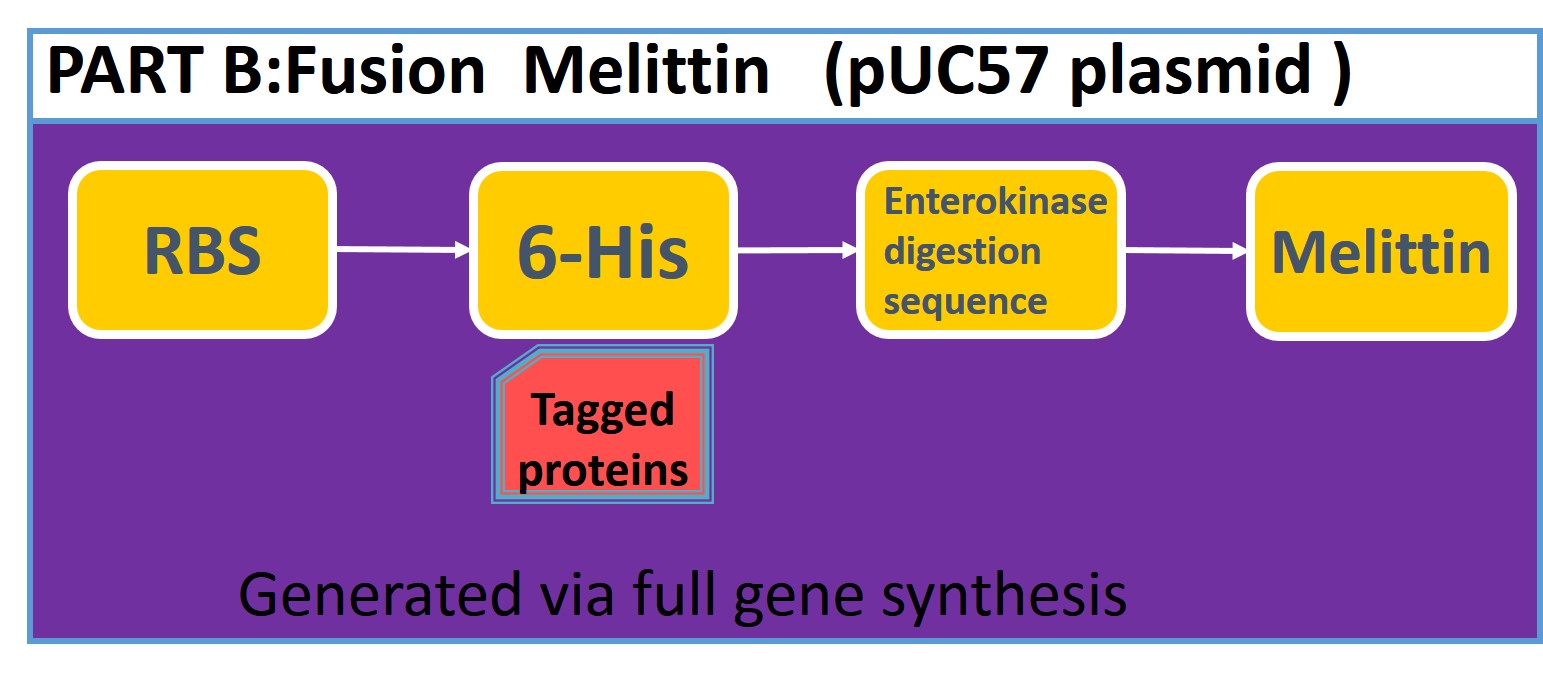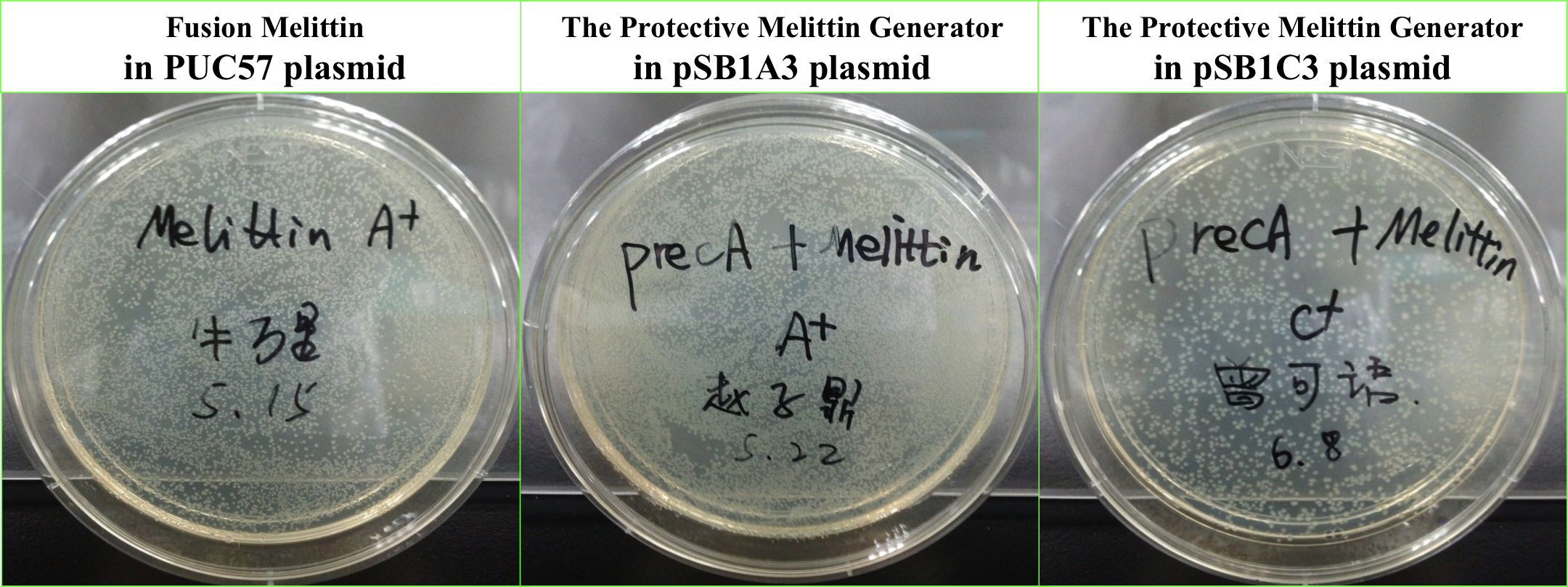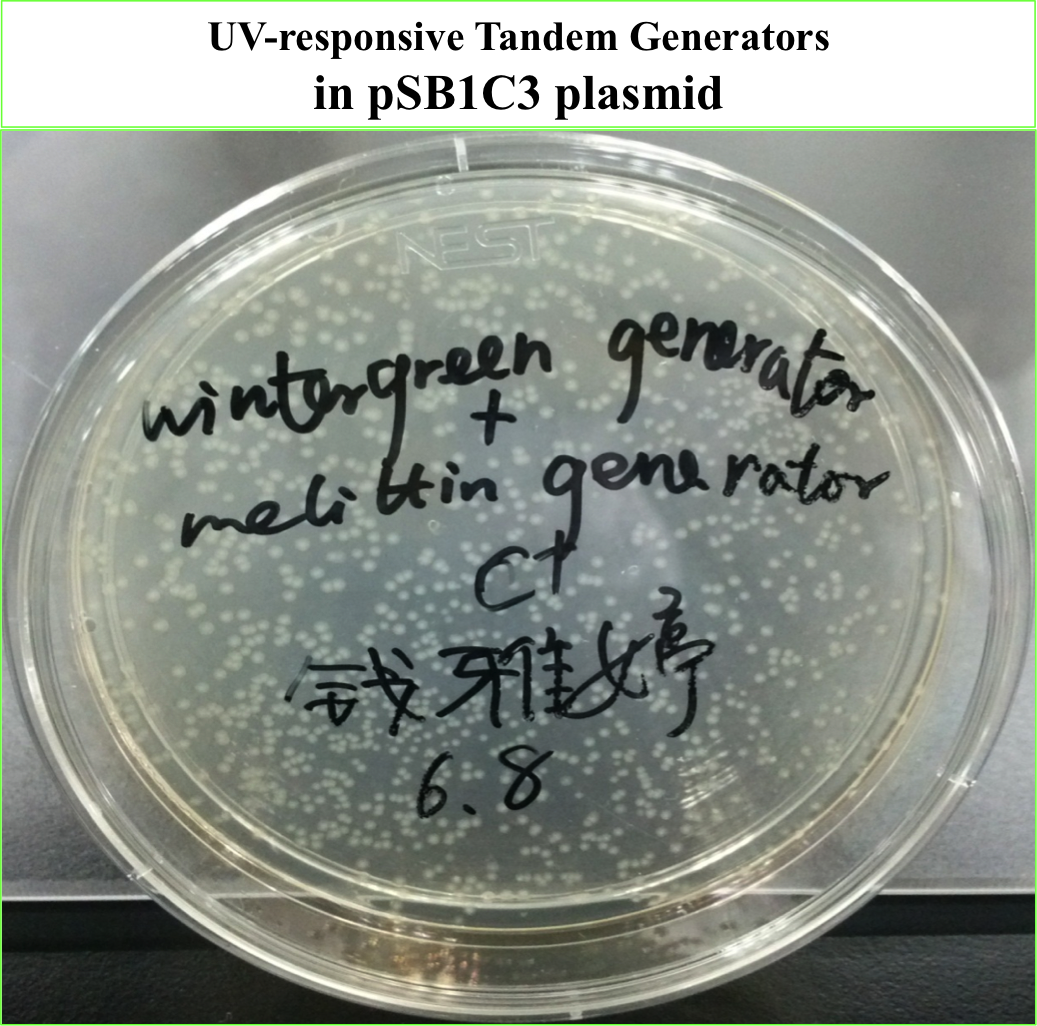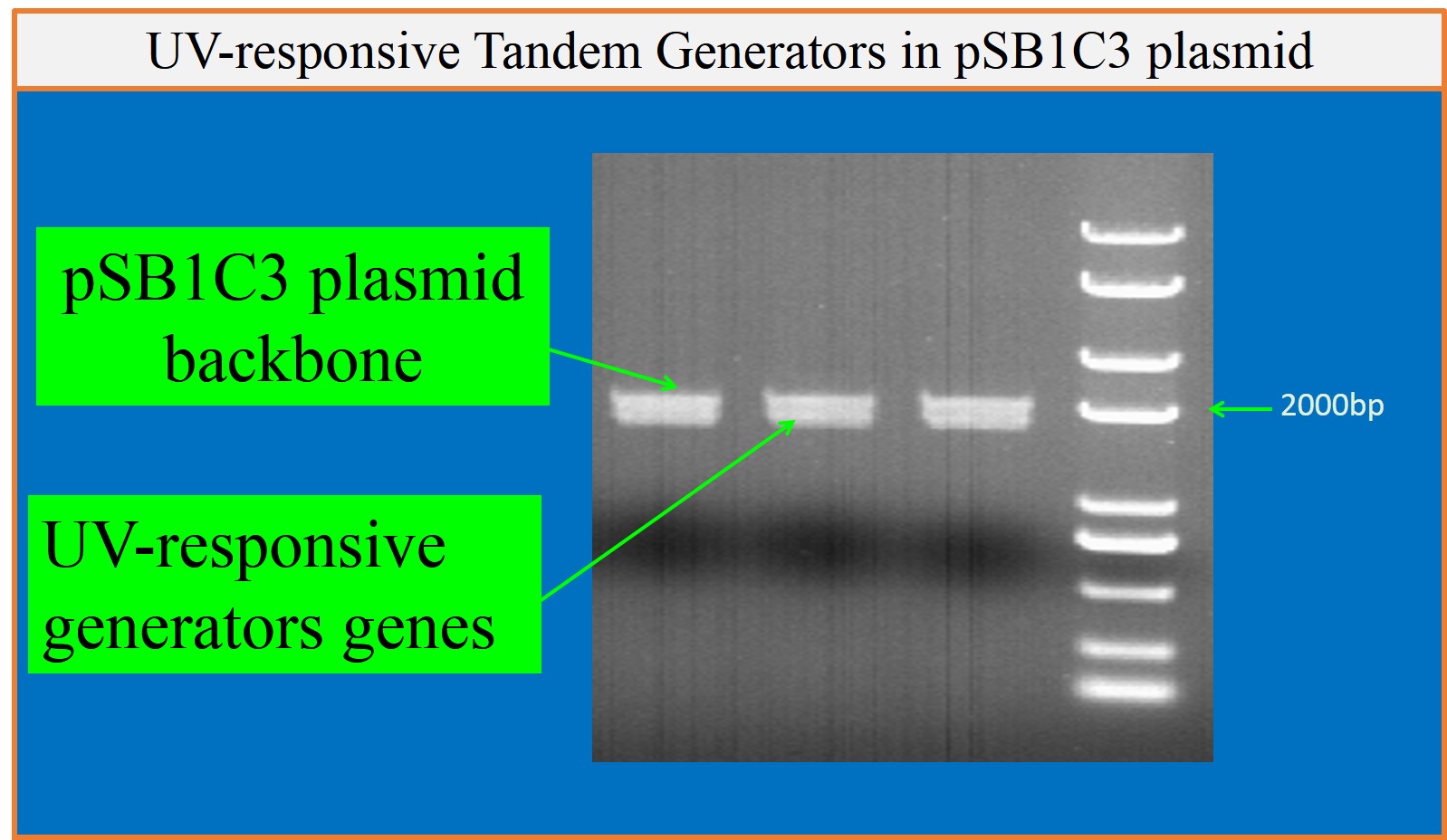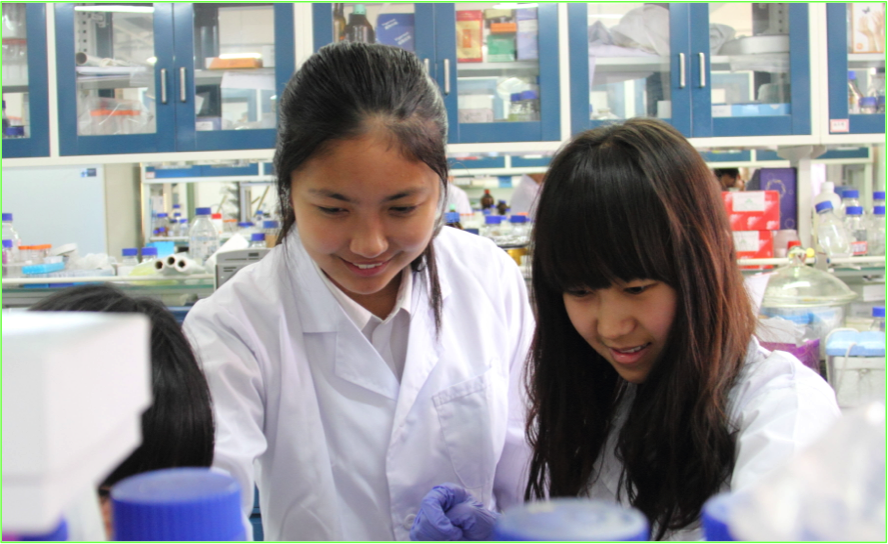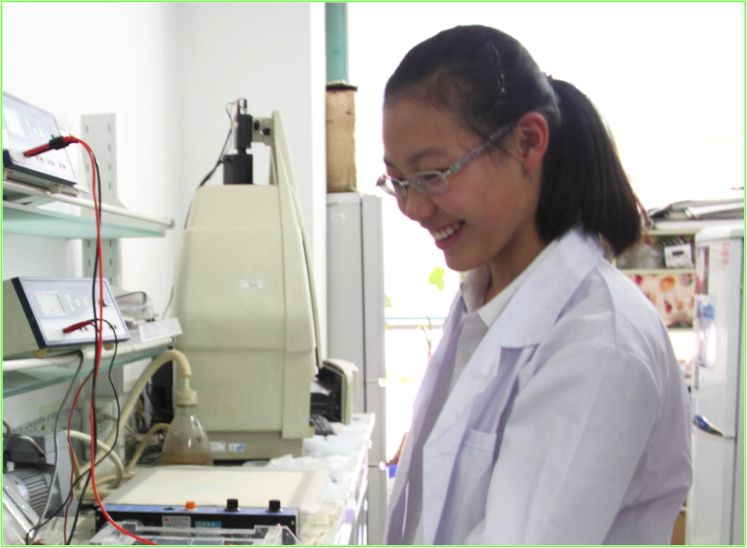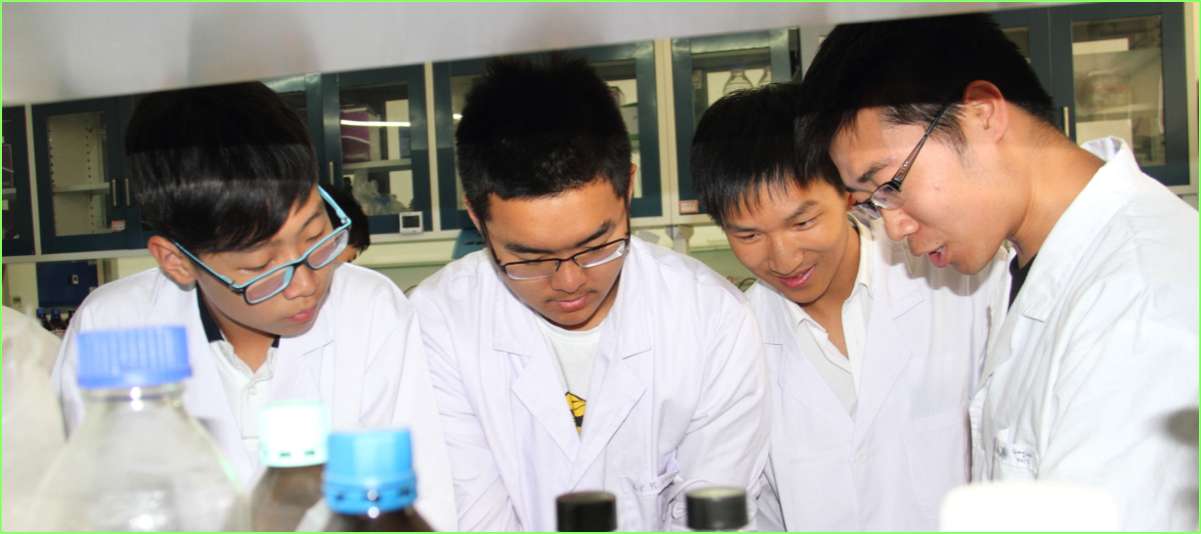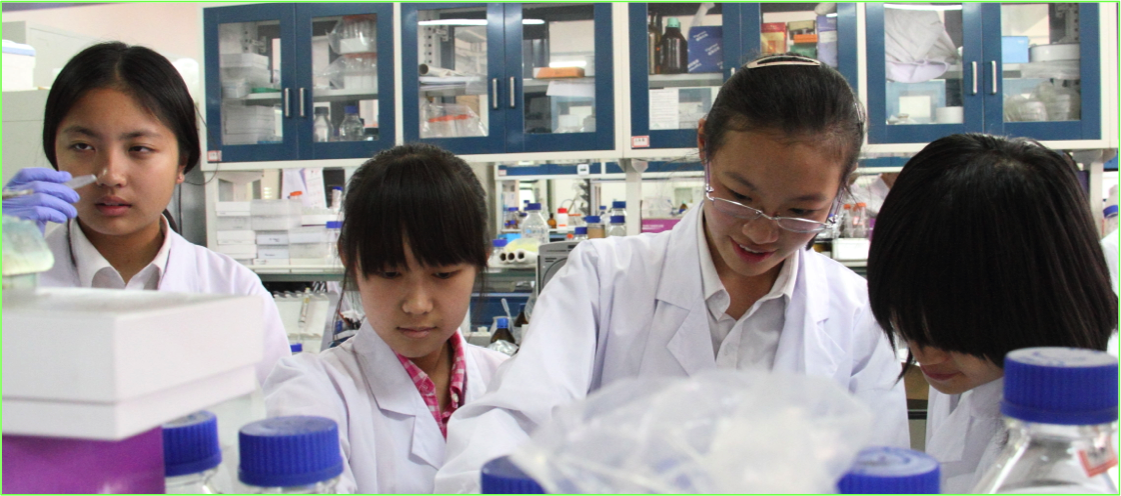Team:Beijing HDFLS High/Project
From 2014hs.igem.org
Contents |
TITLE
The protective melittin generator; The UV-responsing tandem generators for a wintergreen odor and protective melittin.
ABSTRACT
The protective melittin generator is composed of two transcriptional devices: RecA (SOS) promoter (BBa_J22106) and synthesized melittin gene with enterokinase digested sequence. The protective generator takes as input extensive UV radiation and produces as output fusion melittin. Melittin can improve immunity and scavenging free radicals to alleviate the harm from electromagnetic radiation, such as blue light and UV.
We further construct a biological system that produces a wintergreen odor and protective melittin under extensive UV radiation. The biological system includes two generators: the UV-responsing wintergreen odor generator (BBa_K994000) and the protective melittin generator. It not only can warn people of intense UV irradiation by a wintergreen odor, but also produce protective melittin.
BACKGROUND
Blue light from computer induces eye retina producing free radical
The electromagnetic spectrum, in order of increasing frequency and decreasing wavelength, can be divided, for practical engineering purposes, into radio waves, microwaves, infrared radiation, visible light, ultraviolet radiation, X-rays and gamma rays. The eyes of various organisms sense a relatively small range of frequencies of EMR called the visible spectrum or light. Higher frequencies (shorter wavelengths) correspond to proportionately more energy carried by each photon. Blue light is the most energetic portion of the visible light spectrum, it's less energetic than UV radiation but it also has the ability to penetrate into tissue and cause cellular damage.
Blue light is the hardest for the eye to focus on. We actually see a halo around bright blue light. Blue light scatters more inside the eyeball than other colors, producing more glare, more eyestrain and more fatigue. Intense blue light can cause damage to the retina, because blue is the hardest color for the retina to handle. The blue light induce that retinal produce free radicals. These radicals can lead to retinal pigment epithelial cell death. Then some light-sensitive cells lacks of nutrient, which results in visual impairment.
Melittin has funcition of scavenging free radical
The old paint and song implies that the early ancient civilization was conscious of the possible virtues from bee stings.
Melittin is the main component (50~55%) of bee venom, which has multiple functions.
PARTS
I: Parts of Protective Melittin Generators.
Part A: Rec A (SOS) promoter
Extensive UV irradiation impings on heavily DNA damage and results in a single-strand DNA occuring, which activates RecA protein.Then,RecA protein leads to the expression of about 15 different repair proteins to rescue DNA damage.RecA protein is the central regulator in SOS repair system.Rec A (SOS) Promoter is available in registry part plate.
Part B: Fusion melittin
We synthesized fusion melittin gene with enterokinase digestion site. Melittin has the function of scavenging free radicals.
II: Parts of Tandem Generators.
Part A: Wintergreen Odor Generator
The generator was constructed last year, and can produce wintergreen odor under extensive UV radiation
Part B: Protective Melittin Genertor
The generator is constructed this year, and can produce protective melittin under extensive UV radiation
METHODS
METHOD I: The Protective Melittin Generator
METHOD II: The Tandem Generators
We construct tandem Generators, using similar method with protective melittin generator
RESULTS
Result I:The Protective Melittin Generator
Plates
Electrophoresis Map after Restriction Digest
DNA Sequencing and Submitting Part
http://parts.igem.org/Part:BBa_K1283000
Result II:Tandem Generators
Plates
Electrophoresis Map after Restriction Digest
DNA Sequencing and Submitting Part
http://parts.igem.org/Part:BBa_K1283002
STEPS
Step1 Transformation and Miniprep
We get Part A plasmid from registry, and construct Part B plasmid.
 "
"


